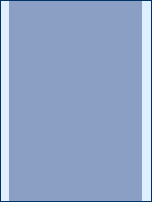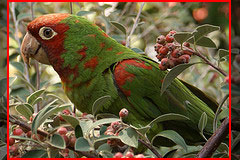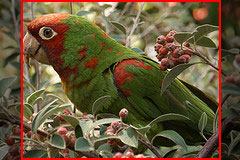Aspect Ratio: The Enemy of Digital Prints
Even if aspect ratio is an unfamiliar term to you, you're probably well aware of the effect it has.
You've just returned from vacation with a glorious shot of the Grand Canyon at sunrise. This is a frame-worthy photo that really needs to be printed larger than 4x6.
You send the digital image off to your favorite printing service and request an 8x10. The print that you get back is less than satisfying.
It appears that almost a quarter of the image was lost!
The culprit: aspect ratio. The good news: there are steps you can take to minimize its effect.
Two Sides of a Rectangle
In its simplest form, aspect ratio is used to describe the relationship between two sides of a rectangle.
It's not the measurements of each side of the rectangle, it's the ratio of one side compared to the other.
For example, if I have a rectangle that measures 1120 by 840 inches, this rectangle has an aspect ratio of 4:3.
In this case, the aspect ratio is just both sides of the rectangle divided by 280.
1120 / 280 = 4 and 840 / 280 = 3
If my rectangle measured 840 by 560 the aspect ratio would be 3:2.
Digital SLR Sensors
Every consumer digital SLR sensor is in the shape of a rectangle.
When people talk about the aspect ratio of a particular camera, they are simply referring to the dimensions of the digital SLR sensor.
The vast majority of digital SLR cameras have sensors with an aspect ratio of 3:2. This is a good thing, and I'll explain why in just a moment.
Cameras made by Olympus and Panasonic use a new system called the 4/3 standard, and guess what? The aspect ratio of these sensors is 4:3 (the name's a bit of a give-away).
Why 3:2 Is a Good Thing
The mathematically inclined may have already figured this one out.
If not, here it is:
An aspect ratio of 3:2 matches the aspect ratio of a standard 4x6 inch print.
Just multiply the aspect ratio by two: 3x2 = 6 and 2x2 = 4.
What this really means: when you take photos with a camera that has a 3:2 sensor, none of the prints that you make at 4x6 will get cropped. What you see on the monitor is what you'll see in the print.
Since 4x6 is such a common print size, it makes sense that the aspect ratio of most digital SLR cameras is 3:2.
Problems With Large Prints
It's not until you want to print at larger sizes - 5x7, 8x10, 11x17 - that the 3:2 aspect ratio becomes problematic.
Here's why: a 3:2 aspect ratio is not equivalent to ANY large-scale print size (with the exception of 12x18). Every 8x10 print that you make from a camera with a 3:2 sensor will get cropped.
Let's dig into this a bit deeper.
First, some simple multiplication shows us that the numbers don't work. If you multiply 3:2 by 4, you get a ratio of 12:8. In print terms, an 8x12 print has the same aspect ratio as your 3:2 sensor.
You'll notice that the long side of this print measures 12 inches rather than 10. When you make an 8x10 print from a camera with a 3:2 aspect ratio, you lose a full 2 inches from the original image.
While the cropping of a 5x7 image isn't quite so severe, you'll find that no amount of fancy math is going to make 3:2 equivalent to 7:5.
The 4:3 Difference

I mentioned above that a few digital SLR cameras have sensors with a 4:3 ratio rather than 3:2.
If you use a camera with a 4:3 ratio (like all of the Olympus digital SLRs) all of your 4x6 prints will get cropped, because 4:3 is not equivalent to 6:4.
The graphic to the right shows you how much of a 4:3 image will get removed when you make a 4x6 print. The portion in dark blue represents the dimensions of a 4x6 print, while the light blue is the part of your 4:3 image that will get cut off in the print.
However, there's a real benefit to a 4:3 sensor when it comes to enlargements: while portions of your image will still be left out if you print at 5x7 and 8x10, the amount lost is significantly less than if you're using a 3:2 sensor.
The two graphics below illustrate the difference. The one on the left represents an 8x10 crop of an image with a 4:3 aspect ratio. The light area is the amount of your image that will get cut off when you make an 8x10 print. Compare this to the graphic on the right, which is an 8x10 crop of a 3:2 image.
 |
 |
4:3 aspect ratio |
3:2 aspect ratio |
What's the take-away from this? If you're planning on making a lot of large prints of your digital SLR photos, then a camera with a 4:3 sensor will be better for you than one with a 3:2 sensor.
Visualizing Aspect Ratios
Many photo editing programs today provide you with a cropping tool, where you can set the aspect ratio of the tool.
For example, you can set the cropping tool so that it crops with a 3:2 ratio, which will work for 4x6 prints. You can also set it to 5:4 if you ultimately want to make an 8x10 print.
Using a tool like this will clearly show you how much of your original image you're going to lose when you make a print.
For those not well-versed in photo editing programs, here are some visual examples to help you out.
4x6 or 3:2 Aspect RatioHere's the original image taken by a camera with a 3:2 sensor. In this case, a 4x6 print will not get cropped in any way since the dimensions of the sensor match the dimensions of the print. |
 |
5x7 or 7:5 aspect ratioHere's what happens to this same image when I want to print it at 5x7. Since the 5x7 ratio is not the same as 3:2 parts of the left and right of the image are going to get cut off in the final print. |
 |
8x10 or 5:4 aspect ratioAnd last but not least, the 8x10. In this case you can see the extreme cropping that happens when you try to print a 3:2 image at 8x10. Two important points: it's nothing wrong with you and it's nothing wrong with the camera. That's just the way it is. |
 |
Combatting The Crop
Faced with losing a huge portion of your image when you want to make a nice big 8x10 print, what's a photographer to do?
It's fairly simple, really: don't get too close.
In the example that I provided above you'll notice that the original 3:2 image is tightly cropped around the parrot - there's not a lot of extra space. When you go to make an 8x10 print of this photo, the parrot's beak is getting clipped.
Instead of getting quite so close to your subject, leave some breathing room.
When you do this, you'll ensure that no part of the subject gets cut off when you make a print that isn't the same aspect ratio as your camera's sensor.
8x10 Improved CropIn the case of this photo, I did leave extra room around the parrot. The image that you see at right is cropped for an 8x10 print size (5:4 aspect ratio) but in this case none of the parrot is getting clipped off. |
 |
Buying Tip
If you want to make most of your prints at 4x6, or don't want to print at all:
If you want to make enlarged prints of your digital photos:
| Digital SLR Home |

|



